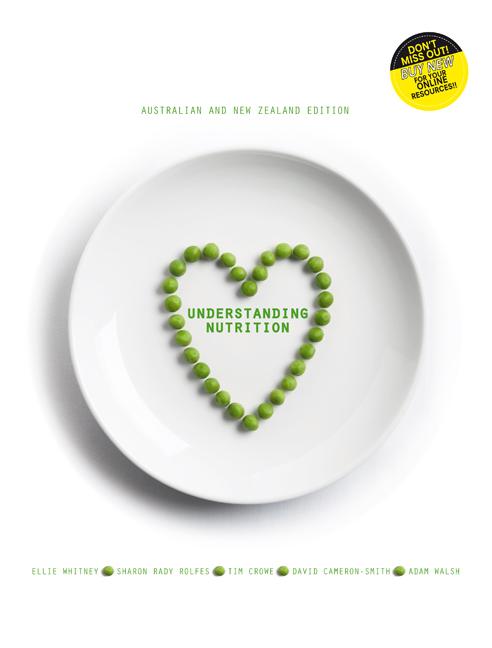Understanding Nutrition Australian And New Zealand Edition 1st Edition By Eleanor Noss Whitney – Test Bank
Digital item No Waiting Time Instant DownloadISBN: 0170185249ISBN13: 9780170185240
In Stock
Original price was: $55.00.$25.00Current price is: $25.00.
Understanding Nutrition Australian And New Zealand Edition 1st Edition By Eleanor Noss Whitney – Test Bank
1. An overview of nutrition2. Planning a healthy diet3. Digestion, absorption and transport4. The carbohydrates: Sugar, starch and fibres5. The lipids: Triglycerides, phospholipids, and sterols6. Protein: Amino acids7. Metabolism: Transformations and interactions8. Energy balance and body composition9. Weight management: Overweight and underweight10. The water-soluble vitamins: B vitamins and vitamin C11. The fat-soluble vitamins: A, D, E, and K12. Water and the major minerals13. The trace minerals14. Fitness: Physical activity, nutrients, and body adaptations15. Life cycle nutrition: Pregnancy and lactation16. Life cycle nutrition: Infancy, childhood and adolescence17. Life cycle nutrition: Adulthood and the later years18. Diet and health19. Consumer concerns about foods and waterAppendix A Cells, hormones, and nervesAppendix B Basic chemistry conceptsAppendix C Biochemical structures and pathwaysAppendix D Measures of protein qualityAppendix E Nutrition assessmentAppendix F Physical activity and energy requirements
Understanding Nutrition: Australian and New Zealand Edition 1st Edition by Eleanor Noss Whitney – Test Bank
The “Understanding Nutrition: Australian and New Zealand Edition 1st Edition” by Eleanor Noss Whitney is a cornerstone resource for nutrition education tailored specifically for students in Australia and New Zealand. The accompanying test bank is a crucial tool for educators, providing a comprehensive set of questions to evaluate and enhance students’ understanding of the material. This detailed overview explores the structure, content, benefits, and practical applications of the test bank.
Structure and Content
The test bank is organized to align seamlessly with the textbook chapters, ensuring comprehensive coverage of the material. It includes various types of questions designed to assess different levels of understanding:
Multiple Choice Questions (MCQs)
- Evaluate students’ grasp of key concepts, definitions, and procedures.
- Assess both recall and application of knowledge.
True/False Questions
- Provide a quick assessment of students’ understanding of factual information.
Short Answer/Essay Questions
- Require students to explain and elaborate on concepts.
- Promote critical thinking and deeper comprehension.
Case Studies
- Present real-world scenarios that necessitate the application of knowledge and problem-solving skills.
- Integrate different aspects of nutrition science, providing practical context.
Key Topics Covered
The test bank covers all major topics addressed in the textbook, ensuring thorough assessment across various areas:
Introduction to Nutrition
- Basic principles of nutrition, including macronutrients and micronutrients, dietary guidelines, and food labeling specific to Australia and New Zealand.
Digestion, Absorption, and Metabolism
- Detailed examination of the digestive system, nutrient absorption, and metabolic processes.
Energy Balance and Body Composition
- Concepts of energy balance, weight management, and methods for assessing body composition.
Nutrition Throughout the Life Cycle
- Nutritional needs and recommendations for different life stages, including pregnancy, infancy, childhood, adolescence, adulthood, and aging.
Diet and Health
- The relationship between diet and chronic diseases such as cardiovascular disease, diabetes, and cancer.
Food Safety and Technology
- Issues related to food safety, foodborne illnesses, and the impact of technology on food production and preservation.
Benefits of the Test Bank
For Educators
Customizable Assessments
- Allows educators to tailor tests to match specific curriculum needs.
- Ensures alignment with teaching objectives and learning outcomes.
Time-saving Resource
- Provides a ready-made pool of questions, significantly reducing preparation time.
Comprehensive Evaluation
- Enables thorough assessment of students’ knowledge and understanding across all major topics.
For Students
Practice and Preparation
- Offers extensive practice opportunities, helping students prepare effectively for exams.
Self-assessment
- Allows students to test their knowledge and identify areas needing further study.
Critical Thinking
- Case studies and essay questions encourage the development of critical thinking and application skills.
Using the Test Bank
Integration with Learning Management Systems (LMS)
- Many educational institutions integrate the test bank with their LMS platforms, such as Blackboard, Canvas, or Moodle.
- Seamless delivery of assessments and automatic grading of objective questions enhance the learning experience.
Formative and Summative Assessments
Formative Assessments
- Use the test bank for quizzes and in-class activities to monitor students’ progress throughout the course.
Summative Assessments
- Utilize the test bank for mid-term and final exams to provide a robust evaluation of students’ overall performance.
Conclusion
The “Understanding Nutrition: Australian and New Zealand Edition 1st Edition” by Eleanor Noss Whitney test bank is an essential resource for both educators and students in the field of nutrition. It enhances the teaching and learning experience by offering a comprehensive and versatile tool for assessing knowledge and understanding. By incorporating a variety of question types and covering all key topics, it ensures a well-rounded evaluation and promotes deeper learning and critical thinking skills.


Reviews
There are no reviews yet.